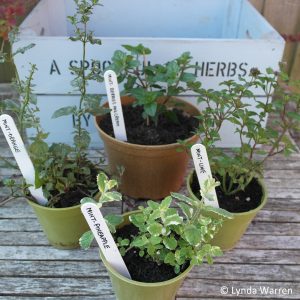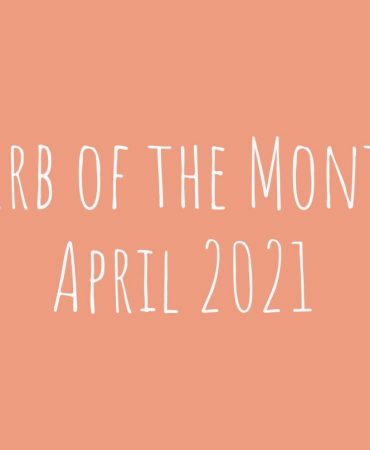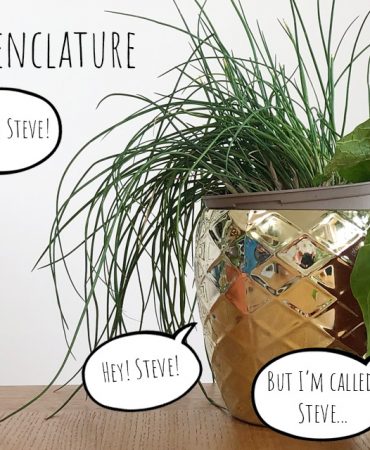Currently Empty: £0.00
MARVELLOUS MINT PART 1 – Growing
If you are a member of The Herb Society and wish to write for the blog, get in touch with your ideas at blog@herbsociety.org.uk
The photos used in this post belong to Lynda Warren and should not be used for one’s own purpose.
All images © 2022 Lynda Warren
I would imagine most people are familiar with Mint. It is a hardy perennial and arguably the best known of the culinary herbs, for many cooks it’s indispensable, even if only as mint sauce to go with roast lamb.
With a height of up to 1 metre, and spread of half a metre, in general, mint has upright square shaped stems and toothed, bright green leaves with pinkish lilac flowers in summer, highly attractive to butterflies.

There are more than 600 varieties, each having a different flavour, although some are quite similar and can be used interchangeable in cooking. Many have distinguishable flavours such as: pineapple or ginger or even citrus flavours such as lemon and lime. Others are so similar it may be difficult to tell the difference. I’ve limited my collection to a dozen different varieties. Although it’s best not to plant different varieties in the same pot as it can mix the flavour, ending up with something bland, rather than tasty.
Four of my favourites are:
Chocolate Peppermint, 60cm with pointed, dark green, brown leaves with serrated edges, mauve/purple flowers. Strongly peppermint scented with deep chocolate undertones. Good in puddings and cakes, especially covered in chocolate or added to strawberries.
Spearmint, 60cm, bright green hairless leaves with small purple flowers. Use in mint sauce, yoghurt, peas, beans, fruit juice and salads. Perfect for mint tea.
Moroccan, 60cm, closely toothed leaves, fragrant with clear spearmint flavour, small white flowers. Grown in Morocco specifically for tea. Use for mint jelly, new potatoes, peas, and yoghurt.
Black Mitcham Peppermint is a spreading perennial to 40cm tall and 90cm wide with strongly aromatic, oval, pointed and toothed dark green leaves flushed with bronze and dark red. Small, pale purple flowers form dense terminal spikes from summer into autumn.
The Black Mitcham Peppermint has an interesting history. As a family, the Colman’s have always been inspired by robust, piercing flavours. For years it was mustard, but 25 years ago they turned their tastes to mint. Back in 1995, Sir Michael Colman travelled to America in search of Black Mitcham peppermint – something he has come across previously, noting that it is a notoriously tricky herb to grow and one which had, 100 years before, been native to England. Struck by the overwhelmingly intense, nostalgic flavour of this peppermint, Sir Michael decided he’d take a few cuttings back home, and have a go at cultivating them, assisted by his farm manager.
After much research, advice, and a good bit of patience, they started by planting a plot the size of a tennis court. And, over time, those peppermint plants slowly started to establish themselves in the soil at the foothills of the Hampshire Downs. Skip forward a few decades to today and the company has over 100 acres of English peppermint, transforming it into the world’s purest peppermint oil. They also use it for tea bags, chocolate, soaps, and handwash. What’s more, every single one of their peppermint plants is related to those original cuttings taken by Sir Michael and has fully acclimatised to the UK environment. That’s why the flavour and aroma is so refined – and completely unique.
The name “mint” comes from a nymph named Minthe or Menthe, a character in Greek mythology who, according to legend, was 5 th century philosopher Pluto’s girlfriend. Pluto’s wife, Persephone, became jealous and turned Minthe into a ground-clinging plant. Although Pluto was unable to change Minthe back into a nymph, he gave her the ability to sweeten the air when her leaves and stems were crushed.
Mint was introduced to England by the Romans and is mentioned by John Gardiner as ‘myntys’ in his book ‘Feate of Gardening’ in 1440. It has been used for centuries to aid digestion and alleviate stomach upsets.
As plants grown from seed may not come true to type, mint is probably the easiest herb to grow via other methods. You can buy mint as young plants in spring, the smallest and cheapest being plug plants, or take stem cuttings during the growing season (they quickly and easily root in water or compost).
From a healthy fully grown plant, select a green healthy stem. Snip off a section of about 10 cms just below a leaf node (where the leaves come out of the stem). Remove the bottom leaves and put your cutting in a glass of fresh water. Leave it on a sunny windowsill, changing the water every few days to encourage new growth. After a week or so you should start to see roots forming on the bottom of the cutting. It’s now ready to plant up as before!

Another method is a little more time consuming but makes use of any plastic bottles you might have and is reusable so extends their life. Remove the label from your bottle and recycle the lid. Make two cuts, one at approximately 10cms from the base, the other the other at 8cms from the top. Discard the middle section. Gently push the inverted top of the bottle into the base. Fill the base with water. Insert your herb cuttings through the neck of the bottle, ensuring the nodes on the stems are in water, add a label, and wait! Just a few days after I’d worked this out I saw a kit available for hydroponics, based on this principle, for £10 each!

Once your herb is in water, ensure they have sunlight for at least 4-6 hours a day. After one week you should begin to see white hairy-like roots developing from the leaf nodes. A further 2-3 weeks and there should be enough roots to plant them on. You could cover the cuttings with a plastic bag to help them retain moisture, however I don’t usually find this is necessary. If you do, shake out the bag every couple of days to ensure there is not too much water. Ensure the level in the base of the container is over the stem nodes. Once potted on, give mint plenty of water, especially during hot, dry weather, but ensuring it remains well drained. It’s happiest also when it has at least a few hours sunshine during the day, in full or partial sun. Although it may look as though your mint dies in winter, it will soon start to regrow, a sure sign that spring is on the way.
Mint is best grown in a pot as it is invasive and can take over the garden with its tendency to spread. Some people say plant it in a bottomless bucket, but I don’t see the point of that as the roots can still escape. In fact, one of my mints somehow made its way under the raised flowerbed and the garden path, turning up in the next flowerbed!
Make sure you rejuvenate congested clumps by upturning the container, removing the root ball, and splitting it in half, with a saw if necessary, tidying up any straggly roots. Then repotting in the same size containers using fresh compost. Early autumn or spring is probably the best time to do this. This is called root division and another way of making new herb plants from old. Keep cutting mint to encourage fresh growth, and avoid growing different varieties of mint close together, whether in pots or in the ground, as they can lose their individual scent and flavour.
Combining mint with pungent, spicy oregano and marigold you can create a garden that attracts pollinators and deters pests. The strongly scented leaves of mint will confuse pests trying to visit carrots, tomatoes, alliums, and brassicas and deter flea beetles.
The next blog will look at harvesting and preserving mint.
Written by Lynda Warren UK Herb Society Ambassador and Public Speaker. Find out more or get in touch via our Ambassador’s page here.




